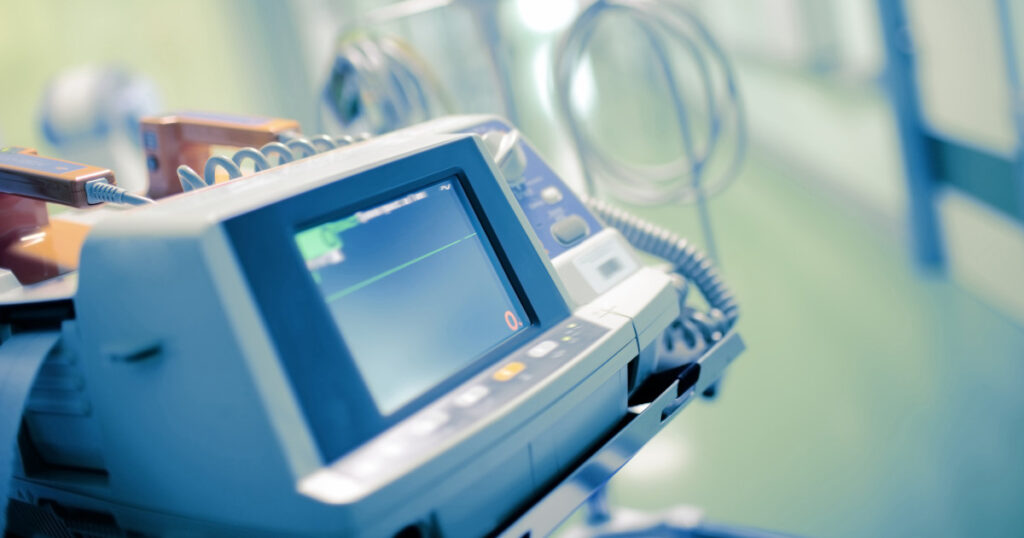Featured Article

Note: This is a summary of an actual case of public record that I handled. I will use generic names instead of actual identities. Unless the case was tried to verdict, any settlement or resolution was with the defendant party not admitting any fault or liability.
This is a story of why I do what I do.
In the years I have spent investigating and bringing medical malpractice cases, I have reached the following conclusion: you have a greater chance of suffering injury or death as a result of what occurs in the hours after the surgery than during. This is true even when something goes wrong during the operative process. This is one of those cases.
The Victim
The surgery that would lead to the end of Joe’s life was elective, meaning that he didn’t have to have it but it was advised because of the constant pain in which he found himself. Joe was in his early 50s, married with children, and had a steady job. Even in the early 1990s, a lower back disk fusion surgery was very routine for most orthopedic surgeons. In preparation for this particular surgery, a triple-lumen intravenous catheter was inserted through the subclavian vein and into the heart, with the tip of the IV confirmed by chest x-ray to be located where the surgical team wanted it. The purpose of the IV is to provide fluids during and post-surgery to the patient, medicines generically referenced as IV fluids. So that the tip remained where the team wanted it, the catheter was sutured to the neck to prevent it being moved unless it was intentional.
“No, he’s not my patient.”
The surgery went fine, but after several hours post-surgery, Joe was complaining to his nurses of discomfort and chest pain. The head nurse was called to assess, and she noticed that Joe was “ashen” in color, had high respirations and low blood pressure. She called the onsite hospitalist who ordered a bedside x-ray of the chest. That x-ray was placed on the screen next to the operative x-ray and clearly showed a much larger heart silhouette was now present, which the nurse recognized as possible cardiac tamponade, i.e. excess fluid surrounding the heart. An enlarged heart silhouette is an easy read for those providing healthcare in the hospital setting.
When she offered her opinion to the hospitalist, he agreed, and left to call the surgeon who was no longer at the hospital. The hospitalist told the head nurse that the surgeon was on his way from his home. Recognizing the signs of possible tamponade and that it was probably advanced given the condition of the patient, the head nurse asked him, “Well, if it is tamponade, shouldn’t we stick him?” The hospitalist answered, “No, he’s not my patient.” To this day I am convinced the inexplicable decision alone to do nothing was the difference between life and death, and in this case, it meant death for Joe.
Background
In theory, the triple-lumen catheter provides fluids from the bag directly into the heart chamber. Inside the chest, a sac called the pericardium surrounds the heart, and it has just the right amount of fluid in it to hold the heart in place while protecting the heart from external impacts to the chest. In this case, the catheter was either originally misplaced or migrated at some point through the heart chamber, heart wall, and into the pericardium sac, resulting in IV fluids collecting in the sac instead of entering the heart chamber. Had the tip of the catheter exited the sac and rested in the chest, you would have another problem, but one not as deadly as cardiac tamponade.
With cardiac tamponade, Joe’s sac was much like a water balloon as it began to increase in size with more and more IV fluid, resulting in the heart being squeezed and unable to pump as much blood as it should – low blood pressure – and the heart beating more rapidly to compensate for the low blood pressure as the heart tried to function properly in sending the blood to its intended destinations. Joe’s respirations continued to increase as his heart worked overtime, yet his color being ashen was indicative that his heart wasn’t working properly. These were the signs recognized by the head nurse and hospitalist – confirmed by the large silhouette compared to his pre-surgery heart silhouette – that caused them to conclude it was tamponade.
The Incident
I spent days in the Southwest Medical School library while preparing this case. This was before computers so I had a library card and was a regular at that library as I worked on cases. As for this case, I never found another reported case of a misplaced IV causing tamponade, nor had my anesthesiologist expert ever heard of such a case. Tamponade usually results from impact to the chest as in a car accident, or perhaps a knife fight, causing the heart to bleed into the sac and begin to squeeze the heart.
So, what happened to Joe was rare. Regardless, if tamponade is suspected from whatever the source, the standard of care is to immediately insert a needle into the pericardium sac and withdraw fluid. It is a simple procedure for those trained to perform it. If done timely, the result is almost always immediate relief, perhaps to be followed by a heart suture to repair the leak, which would not be needed in this case because the culprit was IV fluid, not bleeding heart as is the usual case. The most important thing is to act aggressively and just do it. When the nurse had asked the hospitalist if he was going to “stick him,” she was referring to a pericardiocentesis, which is the use of a long needle designed for just such an emergency.
My Role
When I took the deposition of the head nurse many months later, you could tell she was still upset with what had transpired. I asked her what she did when the hospitalist failed to perform the pericardiocentesis. She told us that she brought a crash cart to Joe’s bedside. A crash cart is a wheeled set of drawers that have supplies and equipment for a hospital emergency, such as a cardiac failure, if you can envision a large, high-tech first aid kit. I asked her what she did then, and she said, “I just stood there and waited for him to code.,” meaning that she waited for Joe’s heart to be squeezed to the point it would stop. She didn’t have to wait long.
The surgeon arrived within ten minutes of being contacted, just as Joe’s heart failed and the code was called. Upon seeing the two x-rays, he immediately recognized cardiac tamponade and asked why a pericardiocentesis procedure had not been performed. He then quickly inserted the needle and in less than a minute withdrew a grossly excessive amount of IV fluid, at which point Joe’s heart rate decreased and his blood pressure returned to normal. However, the damage had been done as Joe was basically brain dead and would die within 48 hours.
The Case
This case was tried to a jury, and we technically won the case and got a judgment against some of the defendants. However, in over forty years of trying cases, no verdict has disappointed me more than this one. Regardless of why the catheter ended up in the pericardium sac, it was and still is my opinion that the hospitalist had more than adequate time to perform a simple life-saving procedure that even the nurse knew needed to be performed.
The hospitalist was not found to be liable, notwithstanding his testimony that he had performed 15-20 such procedures previously. Instead, he chose not to do so this time because – according to him – Joe was not his patient. There was negligence in the misplacement or migration of the catheter that permitted the tamponade, but in my opinion, it was gross negligence to do nothing when this man’s life was dependent upon it. If he was not going to do the job of saving a patient’s life – regardless of whose patient he was – he should have stayed home that night.
Final Thoughts
I’ve often thought that I could try that case ten more times and I would win them all against the hospitalist, but the jury thought otherwise on this occasion. A victory that never felt like a victory.
At The Law Office of David M. Kennedy, we are committed to standing up for the rights of victims in North Texas, Oklahoma, or wherever we are needed. David is here to support victims and their families, ensuring that justice is served and that those responsible are held accountable. If you suspect that someone you love is victim of medical malpractice, don’t hesitate to seek help. Contact Us today for your free consultation.




